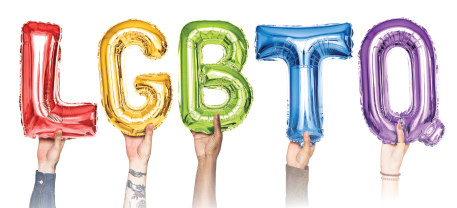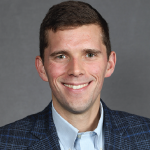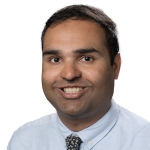
Rawpixel.com / shutterstock.com
Everyone wants to be accepted and feel like they belong. These are innately human traits, and they don’t go away when we leave the grade school playground, high school cafeteria or university quad. We want to feel safe and accepted at work, too, and that feeling is important to professional success and effectiveness.
From a business perspective, diversity, equity and inclusion (DEI) initiatives are becoming more of a focus as studies illustrate how inclusive cultures contribute to smarter, more innovative and more successful workplaces.1 From a human perspective, these initiatives help create a supportive culture in which everyone feels welcome and can do their best work.
DEI efforts can be broadly defined to include many facets of humanity: race, ethnicity, gender and gender identity, geography, ability, age and more. This article looks at ways academic rheumatology can provide an inclusive environment for the lesbian, bisexual, gay, transgender and queer (LGBTQ) community for the benefit of all.
A quick note about terminology: The terminology used by and for the LGBTQ community continues to evolve and become more specific and inclusive. For the purposes of this article, LGBTQ+ is used when referring to the broader community of non-straight, non-cisgender individuals. The plus sign is intended to be inclusive of identities beyond LGBTQ, including intersex, pansexual, asexual and others. Specific terms and shorter initialisms may be used when discussing research studies or within direct quotes.2
Cultural Context

Dr. Wallace
In the U.S., around 4% of the population identifies as LGBT, and about 0.4% identifies as transgender.3,4 In medical school, about 0.7% of matriculating students identified as transgender in 2018, according to the Association of American Medical Colleges.5
Unfortunately, members of the minority LGBTQ+ population can experience added pressures, including discrimination and isolation, in medical schools and healthcare workplaces. One survey of LGBT physicians showed that respondents experienced harassment and social ostracization, heard colleagues make derogatory comments about LGBT individuals and were denied referrals from heterosexual colleagues. Respondents also reported witnessing discriminatory care of an LGBT patient, disrespect toward an LGBT patient’s partner and discriminatory treatment of an LGBT co-worker.6
Discriminatory or hostile environments instill fear & can lead to students & physicians who identify as LGBTQ+ hiding their identities, becoming socially isolated & even censoring their speech & mannerisms to avoid being outed.
Discriminatory or hostile environments instill fear and can lead to students and physicians who identify as LGBTQ+ hiding their identities, becoming socially isolated and even censoring their speech and mannerisms to avoid being outed.7,8
Physicians who identify as LGBTQ+ have also reported facing barriers to obtaining a job in medicine. These include inappropriate interview questions, outright hostility, a dearth of mentors and the inability to use a preferred or lived name.8

Dr. Dave
Amish Dave, MD, MPH, a rheumatologist at Virginia Mason Franciscan Health, Seattle, recalls situations arising when he was interviewing for jobs that made him look elsewhere for work. In one situation, Dr. Dave, who is openly bisexual, went out to dinner with a group of older men who asked him about his wife and focused on the perks of the local (heterosexual) dating scene. In another situation, Dr. Dave mentioned something about his “partner” during an interview and heard the interviewer’s tone immediately frost over.
“His face changed, and he just stopped talking to me about the job. He wasn’t interested, really, in me anymore,” Dr. Dave explains. “I realized, this is not a job I necessarily want to join. … I think that might also be one of the reasons why a lot of physicians who maybe identify as queer in some ways might not want to identify themselves as gay or out.”
Increasing Inclusion
Not everyone has negative experiences, of course, and it’s the positive stories that exemplify what a healthy culture looks like. DEI committees and initiatives can be a part of creating an inclusive culture in which everyone feels valued and accepted—and that can make all the difference.
“From the start [of medical school], I was very open about who I was,” says Zach Wallace, MD, MSc, a rheumatologist at Massachusetts General Hospital, Boston. “There were other people who were LGBT in my class, and it was such a non-issue.”
Dr. Wallace, who is openly gay, came out toward the end of his senior year of college. He recalls the experience as positive because of how accepting his family and friends were, and he appreciates the same acceptance and openness with his colleagues in the Department of Medicine, where he’s a member of the Diversity & Inclusion Committee and the LGBT subgroup.
“I think medical schools are becoming more inclusive today,” Dr. Dave says. He remembers an LGBTQ group forming at Harvard Medical School and the annual party hosted when he was at Brigham and Women’s Hospital, Boston, for his rheumatology fellowship as examples of this progress.
Being sensitive to what it means to work in an inclusive environment is one big step all medical providers can take to foster mutual respect in the workplace, according to a letter to the editor in Academic Medicine. The authors cited simulations as an effective and safe way to teach residents and medical students about casual homophobia—offhand comments that seem benign to speakers, but can be hurtful to listeners—and noted resident-driven diversity and inclusion committees can help empower trainees to speak up in the face of discrimination.9
Mentorship & Recruitment Opportunities
Within an inclusive and welcoming environment, there is lots of opportunity to start new initiatives, foster mentorship opportunities and even increase recruitment to the specialty. For example, Dr. Dave says his identity has provided him some valuable opportunities. He co-founded and co-chairs Proudly Virginia Mason (VM), an LGBTQ staff committee, and he works with the system’s transgender service line.
“I advocate for patients who are LGBTQ, and when we have residents or medical students who want a mentor or to have discussions about these topics, … I serve as a resource on these topics as well,” he says.
LGBTQ+ mentorship programs can have a positive effect on the personal and professional experiences of both students and mentors. Researchers at the Schulich School of Medicine and Dentistry, Western University, London, Ontario, Canada, found their program helped students feel positive about their future in medicine and that mentors liked being role models and felt a stronger sense of community with their colleagues.10
“Going to college was my first experience understanding that you could identify as LGBT and be accepted and be part of this community,” Dr. Wallace says. He recalls an LGBT resource center at his school and meeting other people like himself. This differed from how he grew up, where he didn’t know anyone else who was gay.
“There was something about going away to college and leaving home—seeing other people and meeting other people, and learning more about just my own identity and understanding what that meant—that made me more comfortable,” he says. “I think also, at the same time, the world was changing, and people were becoming more accepting.”
Dr. Wallace paid it forward during his residency by helping create resources for people who identify as LGBT. He credits the welcoming environment this helped foster with successful recruitment efforts in later years.
“Rheumatology in general is always talking about how we have too few rheumatologists and we need to recruit more rheumatologists, and I think [having established LGBTQ groups] serves as an avenue for us to do that,” Dr. Dave says. “People tend to gravitate toward fields in which they see people like them, and I think that’s true also for recognizing doctors who are LGBTQ.”
One way to help with recruitment is to provide new residents and fellows with resources to find supportive peer groups. Dr. Dave notes this can be as simple as including links to professional organizations, such as GLMA (previously known as the Gay & Lesbian Medical Association), in welcome letters.
Welcoming Everyone
In the end, it comes down to people feeling welcome and comfortable enough to be themselves at school and at work. As with all things, there’s a balance. Some people are more comfortable talking about their personal lives than others—and the same goes for listening to people talk about their personal lives.
“It’s a challenge, because you want to be respectful of what people want to talk about. … Not everyone wants to talk about their sexuality to everyone in the department,” Dr. Dave says.
One way to create a welcoming space for the LGBTQ+ community is to not make assumptions about a person’s personal life by asking specifically about a “wife” or a “husband.” That’s not to say it’s inappropriate to ask at all, but consider using “significant other” or “spouse” instead. Another way is to invite people to share how they want to be identified—for example, by declaring pronouns (he/him, she/her, they/their, or “ask me”) on name tags or in signature lines.
“Allow people to share who they are,” Dr. Wallace says, “and make it clear that everyone is welcome in this profession and in our College—which I think is true. I think people feel that way. But the more we talk about it and have these conversations, the more clear that becomes.”
Dr. Wallace recommends inviting people to bring their partners to work functions and events as a way to foster a welcoming environment. He also notes that it’s important for institutional leaders to keep diversity of all kinds in mind when making hiring and promotion decisions, and that having equal parental leave policies for LGBT parents is invaluable. Dr. Wallace was able to take time off to be at home when both his son and his daughter were born.
“[When I was] growing up, I didn’t see people like myself or know of people like myself in [leadership positions], and I think now that’s changed a bit,” Dr. Wallace says. “But I think we need to continue to demonstrate that no matter who you are, you can be successful and achieve whatever it is you want to achieve in your professional career.”
Kimberly Retzlaff is a freelance medical journalist based in Denver.
Learn More
More information about terminology can be found in The New York Times article, “The ABCs of L.G.B.T.Q.I.A.+”
References
- Tulshyan R. Do your employees know why you believe in diversity? Harvard Business Review. 2020 Jun 30.
- Gold M. The ABCs of L.G.B.T.Q.I.A.+. The New York Times. 2018 Jun 21.
- Meyer IH. How do you measure the LGBT population in the U.S.? Gallup. 2019 Jun 27.
- Meerwijk EL, Sevelius JM. Transgender population size in the United States: A meta-regression of population-based probability samples. Am J Public Health. 2017 Feb;107(2):e1–e8.
- Association of American Medical Colleges. Matriculating Student Questionnaire; 2018 All Schools Summary Report. 2018. AAMC: Washington.
- Eliason MJ, Dibble SL, Robertson PA. Lesbian, gay, bisexual, and transgender (LGBT) physicians’ experiences in the workplace. J Homosex. 2011;58(10):1355–1371.
- Mansh M, White W, Gee-Tong L, et al. Sexual and gender minority identity disclosure during undergraduate medical education: ‘In the closet’ in medical school. Acad Med. 2015 May;90(5):634–644.
- Dimant OE, Cook TE, Greene RE, Radix AE. Experiences of transgender and gender nonbinary medical students and physicians. Transgender Health. 2019 Sep 23;4(1):209–216.
- Gabrani A, Pal S. Physician and gay: Am I safe at work? Acad Med. 2019Jun;94(6):753–754.
- Beanlands RA, Robinson LJ, Venance SL. An LGBTQ+ mentorship program enriched the experience of medical students and physician mentors. Can Med Educ J. 2020;11(6):e159–e162.



